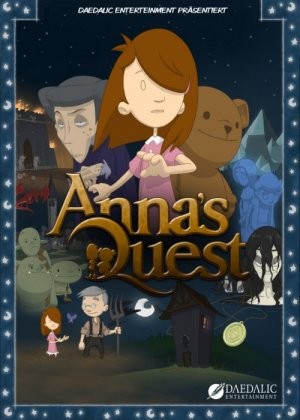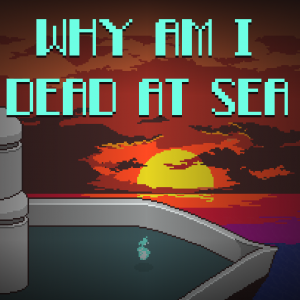Review for The Black Watchmen

Way back in 2001, Microsoft released a tie-in game to promote Steven Spielberg’s upcoming film AI: Artificial Intelligence, and its gameplay mechanics were highly unusual. It played out across a variety of media, including websites, email, and telephone, rather than within the confines of a video game. Players could interact with characters from the game over the phone in real conversations with live actors, and over a three-month period participants solved a murder mystery from the year 2140. The game came to be called The Beast, and it set down the basic formula for a new genre of interactive fiction: the Alternate Reality Game.
Though usually created as similar free-to-play viral marketing promotions, there have been attempts to combine the real-world aspects of ARGs with the more traditional video game experience, perhaps the most notable of which is Lexis Numérique’s In Memoriam (aka: MISSING: Since January). Other projects have attempted to create self-sustaining “permanent” alternate reality games, based on an evolving storyline that requires players to pay for the ongoing adventure. The latest incarnation of this genre is Alice & Smith’s The Black Watchmen, an ambitious mashup of the puzzle and alternate reality genres that attempts to bring the concepts and real-world immersion of ARGs to a wider audience. It’s presented in an episodic format that tells one story per "season", and can continue as long as players are willing to pay for new installments.
The eponymous Black Watchmen are a global, clandestine task force whose job is to protect the public from dangerous occult phenomena. Recovering ancient artifacts imbued with dark powers, investigating illegal human experimentation by secret societies, and nullifying diabolical rituals designed to open portals to other planes of existence are all in a day’s work for the men and women employed by the group, and it takes all of them working together to fight the dangers often lurking in plain sight. Players take on the role of an agent within the organization, and are tasked with following leads, uncovering information, and providing support to other branches of the Black Watchmen as they thwart paranormal dangers around the world.
Each season is designed to unfold over a set period of time. According to the developers, the average time will be three months, but may vary somewhat season to season. With one season released so far, the bulk of the player’s time is focused on completing a number of “missions” delivered via the Steam-based client. Each mission contains one or more puzzles pertaining to some aspect of the investigation, such as identifying persons of interest, facilitating infiltration of a suspect group or organization, or sifting through evidence for clues to the whereabouts of an artifact or suspect. At the start of any given season, only a few missions will be available, but more will unlock every few weeks until the season is over. These missions can be completed at the player’s own pace as they debut, or even after the season is complete.
The first step is to set up an account for the game, though the only personal detail it requires is a valid email address. Once that’s done, unlike almost every other game you might have played, there is no player avatar and no digital 3D world to explore through The Black Watchmen’s client, only a user interface that, among other things, shows which missions have been unlocked for the season and which ones (if any) still await activation. Referred to appropriately as the “mission hub,” this is where players access all of the main assignments, including tutorial missions which detail the basics of play, such as codebreaking and image manipulation (yes, those are in fact considered mere basic skills in this game). The client design is pleasingly minimalistic, with the majority of visual elements bearing a futuristic black-and-white tonality. However, elements such as the mission marker bars and agent map are accented with green and blue hues for emphasis.
The client also includes sound effects for things such as clicking buttons and completing missions, and music is available to listen to while you play as well. Both of these aspects are well done, but do not really impact gameplay that much either way. The soundtrack varies between ethereal vocal tracks and some upbeat guitar and electronica tunes, but overall I found these to be distracting and eventually turned them off. Voice-overs are also featured at various points throughout the game, and while there’s occasionally an over-the-top performance, most contribute an appropriate mood to the scenario, whatever that might be at the time.
Anyone unfamiliar with ARGs will discover right in the opening moments how different this game is from traditional titles. The vast majority of your time is actually spent outside the client. But rather than taking place within a digitally created world, you’ll interact with a multitude of real-world websites and social media pages, including some created specifically for the game and many that are not, such as Wikipedia, Google Maps, and other websites that contain the information necessary to continue your investigation.
Each mission begins with a video briefing that details the parameters of the task and what you must do to solve it, but these communications are concealed within another video. In one instance, a disturbing corporate training video (whose company is currently under investigation by your organization) shows footage of a loving family playing in a field as a voice-over assures employees that the company will protect them and their families by torturing and killing anyone who threatens their safety. Suddenly, the video is abruptly interrupted by a disembodied voice from your handler at the Agency, who details what your upcoming mission will be. Though not all of them are as macabre as this one, the often surreal nature of these videos, combined with their slick production values, make for a deliciously unsettling aesthetic that I found highly enjoyable.
Once you have been introduced to the objective at hand, the mission page in the client will reiterate succinctly what you need to accomplish, as well as fill you in on any assistance the Black Watchmen can give you. To access this information, the game will lead you to the Black Watchmen Archive, a webpage where you enter the pertinent archive number. Once on the correct page, a collection of clues and evidence will appear, leading in one way or another to the solution, such as a word or phrase that must be entered into a waiting text box in the client.
Tasks you must perform are vastly different from other games also. The Black Watchmen tries to recreate the feeling of being an actual desk-jockey for a clandestine task force, so research is an enormous part of each puzzle. For example, one requires that you attempt to decode a letter in order to discover who wrote it, while another demands that you examine the blueprints of an enemy stronghold and the patrol times of guards to determine the best time for an assault team to strike. Still others have you research real-world topics as diverse as geology, religion, mathematics, and codebreaking, to name but a few. One investigation involves deducing the material that a particular item was made from based only on its chemical composition and physical attributes, while another puzzle asks you to research the history of a secret society and its founders.
Another puzzle illustrates the ARG-like elements of The Black Watchmen, in which gaining access to a corporate server is the goal. After uncovering the email address of an employee inside the company with access to that server, you must use Facebook to uncover various personal details about the person (fictional, of course). Using knowledge gleaned from your digging, you will email the character (via real email) using an agency-recommended form letter. Assuming you are able to convince the recipient that you also work for the company in question but happened to lose your password, you will be given the information needed to advance your investigation.
For me this aspect was nothing short of thrilling, but it's possible that for some players this kind of reality-bending gameplay may simply be too unsettling, as there are times a website can be so convincing it seems it could be for a real entity rather than a fictional one. A clinic featured in the game, for instance, supposedly has its offices in a real Montreal hospital, and it took me a few moments (and a Google search or two), to make sure that an email I was planning to send them wasn’t going to a real doctor’s clinic.
One source of frustration when entering solutions into the client is that occasionally the spelling must identically match the format expected. There were times when I knew what the answer was, but the game wanted a specific term or spelling of the word or phrase rather than accepting multiple variations, as was the case most of the time. Luckily, for some puzzles the format is indicated by the text box, such as when a phrase must be separated by dashes or some other punctuation. This feature is not applied consistently, however, and the issue cropped up enough times to make it more a relief than a triumph to solve some of the affected puzzles.
As you progress, you may notice a pop-up mentioning that a “class” has been unlocked, along with one of four associated icons becoming active in a panel near the bottom of the mission hub. Bearing the names “Soldier,” “Scientist,” “Spy,” and “Cybertech,” these classes roughly conform to the theme of each set of missions. For instance, the set involving infiltration of a hostile organization unlocks the Spy class, and the set of missions that feature more martial activities unlocks the Soldier class. Players start out assigned as a generic Agent, and choosing one of the other icons has no effect on the course of the game so far, though it’s possible that future seasons may see these classes given more relevance than is currently implemented.
Given that the game is built upon so many areas of knowledge, it probably seems overwhelming for one person to handle everything on their own. Indeed, it would be highly unlikely for a single player to know all the information – or even be able to perform enough individual research – necessary to complete the game. This is by design, and highlights an important distinction between The Black Watchmen and other ARGventures like In Memoriam: collaboration between players is essential in this game. To that end, an ever-present button on the client screen links directly to the game’s forums as the basis (though not the only means) of multiplayer communication.
Some puzzles draw their solutions from specific engineering or scientific disciplines, such as optical physics. While other games might present clues in such a way that all players (whether familiar with that topic or not) would eventually figure out what they need, The Black Watchmen often provides clues like graphs or illustrations entirely devoid of context, meaning that prior familiarity with the subject matter is vital to understand how to connect the dots between what you are looking at and what you need to know to solve the puzzle. Most puzzles are more general in nature than this one, but typically the more knowledge and skills you have available, the better you will be able to figure out possible areas of research to investigate. This is where cooperation with other players factors in, as many minds are better than one.
Though players are encouraged to actively engage in the collaborative puzzle-solving process, those who do not wish to participate directly can simply browse the forums for other players’ discussions and hints to the solution of a given puzzle, though the developers do not allow full answers to be given there. IRC chat channels, where players have worked together to complete a mission, are also logged for later perusal, and of course walkthroughs from various sites around the web will eventually be available if you’re looking for the entire solution.
Collaboration is ostensibly possible from within the client too. Accessible from a button that calls up a world map showing the approximate location of other “Agents” currently playing the game, a “Call for Help” feature is supposed to allow you to request assistance from other players for the puzzle you are currently working on. You can either ask for someone who has already solved the puzzle or allow other players currently working on that puzzle to collaborate with you to solve it. While I tried this feature a few times (and even tried to help others by clicking their associated map beacons), I was never able to figure out exactly how it worked, so I simply gave up and used the forums, IRC logs, and YouTube walkthroughs in order to figure out the puzzles, which worked well enough.
One aspect of The Black Watchmen I was not able to test involved the optional “live” ARG elements, as the window of opportunity had closed by the time I began playing. There are three standard levels of participation, accessible from an icon in the client and color-coded based on how deeply you want to be immersed in this world. Red requires only an email address and is the initial level at which all players begin. (Apparently it is possible to unsubscribe from even this basic level of communication, though doing so means that you will not be kept informed of the results of live events over the course of a season.) Orange is unlocked if you provide your phone number. At this level, phone calls from characters in the game as well as certain time-sensitive live missions will become available. Yellow is activated by providing your address information as well, with which it is possible to interact first-hand with the gameworld. A green level will also be theoretically available, accessible only at certain times and for certain players willing to undergo and submit a medical exam to ensure their health to participate. This level has not yet been made active, so I have no idea what kinds of things those who opt for it would be subjected to.
The kinds of tasks that players engaged in during the first season’s live events included such things as texting pictures of cell-phone towers to the Black Watchmen (part of a mission to extract an asset from a location and transport them safely elsewhere), and receiving packages containing “cursed” artifacts whose effects needed to be nullified; this was essentially an elaborate address-confirmation event, as players needed to send proof that they had completed the ritual designed to remove the curse. There were even opportunities for the more ambitious players to meet up with characters (portrayed by actors) from the game in real life at a previously agreed-upon location to, for example, give them an item received in a prior live mission.
It bears repeating that these levels of involvement are only for players who wish to participate, intended to make the game seem more “real,” as well as provide opportunities to influence the direction of the story. The latter aspect involves some drawbacks for anyone who decides not to join in, however, as new missions in the client reference characters and plot points previously introduced during live missions. The official forums provide information about live events that have taken place, so it is possible to fill in any plot holes, though I still felt out of the loop and confused about certain aspects of the story after the fact.
The characters involved in the story are one of the weaker aspects of The Black Watchmen, which is a shame since this aspect is where ARGs have a lot of potential to shine. Save for a few distinct moments, I never really felt like the characters were anything but fictional, since emails were obviously answered by an automated system. The atmosphere of the game is spot on, however. With conspiracies involving corporations tied to occult practices, characters performing disturbing experiments, and various paranormal phenomena, there were moments when I felt like I really was part of a clandestine force trying to stop supernatural evil from being unleashed on the planet. The exact reasons for a particular investigation or how a certain mission fit into the overall plot were sometimes unclear, but the overarching purpose of each mission gained more focus as the game progressed toward the finale.
My initial fears that the game would lack value for players at the lowest participation level were almost entirely unfounded. Taking me more than 25 hours to complete, the 25-mission first season has more than enough content to justify the full price, even without live event involvement. For players willing to trade their personal information for access to the higher levels of immersion, it is a fantastic value, considering all the added benefits that affords. Of course, this depends on making your purchase prior to a season starting (or very soon after) in order to take part, as once a live event is over it won’t happen again.
There are even bonus puzzles to solve in the form of secret answers for each mission, though I didn’t really have the time or the inclination to figure them out, opting instead to simply search the forums for the answers. When you enter all of them into the client, a further five “secret” missions unlock. And if all this still isn't enough to sate your puzzle-solving desires, between seasons the developers are allowing players to come up with their own missions, and a voting process will see the highest rated fan-missions uploaded to the client for all players to partake. The price of admission includes these user levels, at least the ones released up to the start of the next season.
Regardless of when you begin playing, you will continue to have access to most older content even after a season is over. Since the game relies on real-world websites, I have concerns about the practical time limits for elements like the websites of fictional corporations whose domains could expire at some point, but for now the developers are promising that you will be able to access the content you paid for even well afterwards. One exception to this rule involves the “situation room.” Accessible from the mission hub are a bank of TV monitors. While a season is ongoing, they display various communications from the Black Watchmen agency as well as other characters, but now that the season is over they are inactive, showing only pulsing static.
It should be noted that, because the game is heavily based on paranormal and occult elements and melds both real historical and fictional events and characters, there are a few situations where it is required to research actual texts from figures like British occultist Aleister Crowley, as well as topics like demonology and Goetic magic (the latter being a system for summoning demons that appeared during the Renaissance). While the great majority of puzzles do not require delving into such topics, the few times it is required may be an impediment for those with a religious or personal objection to such exposure. I found some of these elements problematic myself, but the ability to consult hints and walkthroughs for answers allowed me to continue the game without too much concern in this regard.
Overall, I found The Black Watchmen to be an incredibly unique and enjoyable experience, and a great first attempt by Alice & Smith at creating a self-sustaining ARG. Although not perfect by any means, the melding of real and fictional elements makes for an often thrilling experience, and the diverse array of knowledge and activities required to advance through each mission is a welcome change of pace from the self-contained obstacles that traditional games have to offer. The paranormal plot could have benefited from more clarity at times, but this doesn’t seriously hinder the overall experience or the engaging atmosphere. For gamers looking to immerse themselves in a world of paranormal conspiracies and shadowy corporations while flexing their problem-solving and research skills on puzzles that only an alternate reality game can provide, The Black Watchmen may be just the game you’re looking for. And if the developers follow through on their plans, there is plenty more to come.































